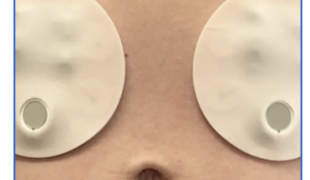- 4003
- 320
- 12
- 12
- 0
- Help Ukraine
About the solution
When training a caregiver on the process of exchanging the G-tube in patients, Laura saw that only a more theoretical approach was carried out, leaving the practical day to day course of managing a PEG or G-tube behind. She believed that this wasn't neither efficient nor pratical, and assembled a team of innovators composed of Isabell Dechamps, Adrian Jobst, Lydia Hentschel and Anas Ktech and got to work on a solution.
Since a PEG tube or G-tube, needs to be changed every 6-8 months, and as it can be done in the comfort of the patient's house, it is necessary to have an up to date and efficient training, which portrays a realistic situation, so that the best possible care is given, in order to prevent infections and incorrect tube placement. That's the reason why the Helper's helper came about!
It's a simple dummy for everyone to try and attach the G-tube button, inflate the balloon that sits normally in the stomach and squirt some water trough the tube to see if is inserted correctly. This device is made of either silicone or foam, it is kept in a container to prevent leaks, and has a small hole where you can insert a typical G-tube button.
This allows every caregiver or even patient to try as much times as they need to insert and remove the G-Tube in the hole that the dummy provides, allowing to decrease the anxiety associated with this procedure (since you are messing with a direct access to an organ) and improve patient care.
As of 2019, the prototype using silicone for the dummy can be printed on a 3D printer wherever you are.
Read about it:
https://projektlebenaktiv.com/helpers-helper-dummies/
https://www.welder.app/careables.org/helpers.helper/master/tree
If interested you can email the team at HelpersHelper.Dummy@gmail.com
https://www.youtube.com/watch?v=Vkh1mV0cCkc&t=19s
这些解决方案不应包括使用药物,化学品或生物制品(包括食品);创伤性设备;冒犯性的,商业或内在危险的内容。该解决方案未经医学验证。请谨慎进行!如果您有任何疑问,请咨询健康专家。
DISCLAIMER: This story was written by someone who is not the author of the solution, therefore please be advised that, although it was written with the utmost respect for the innovation and the innovator, there can be some incorrect statements. If you find any errors please contact the patient Innovation team via info@patient-innovation.com
-
-
674
-
1
-
10626

Parents create 3D printed orthosis inspired by their son
CAREGIVING
MOVING IN A WHEELCHAIR: Moving using a wheelchair.
(SELF)-CARE: EATING: Eating independently.
(SELF)-CARE: DRINKING: Drinking independently.
Cerebral Palsy
Angelman's Syndrome
Neuromuscular Disorders
Muscle Tone Abnormalities weakness
3d Printed
Assistive Daily Life Device (to help ADL)
Body-Worn solutions (Clothing, accessories, shoes, sensors...)
Prosthesis
Gait abnormalities (e.g., walking difficulties, unsteady gait)
Muscle cramps or spasms
Difficulty coordinating movements
Stiffness or rigidity (difficulty moving)
Paralysis of the legs and lower body
Muscle weakness
Loss of balance
Managing Neurological Disorders
Maintaining Balance and Mobility
Caregiving Support
Neurology
Pediatrics
United Kingdom
-
-
-
309
-
0
-
2979

Caregiver Steve Axelrod creates EKG for the gut - a patch-based system is designed to read signals from the digestive tract.
(SELF)-CARE: HYGIENE: Maintaining personal hygiene
(SELF)-CARE: USING THE TOILET: Using the toilet independently
(SELF)-CONTROL: BOWEL CONTINENCE: Maintaining bowel continence
CAREGIVING
Chron's Disease
Inflammatory Bowel Disease
Assistive Daily Life Device (to help ADL)
Change in bowel habits
Bloating
Constipation or diarrhea
Promoting self-management
Enhancing digestive function
Preserving Organ Function
Restoring Skin Health
Alleviating Allergies
To improve Treatment/Therapy
Preventing (Vaccination, Protection, Falls, Research/Mapping)
Raise awareness
Caregiving Support
Gastroenterology
General and Family Medicine
General Surgery
Pediatrics
United States
-
-
-
724
-
0
-
12551

Device to monitor Epilepsy seizures
CAREGIVING
Epilepsy
Assistive Daily Life Device (to help ADL)
Seizures
Enhancing health literacy
Promoting self-management
Managing Neurological Disorders
To implement a diagnostic tool
To improve Treatment/Therapy
Raise awareness
Caregiving Support
General and Family Medicine
Internal Medicine
Neurology
Pediatrics
United Kingdom
-
 zh
zh